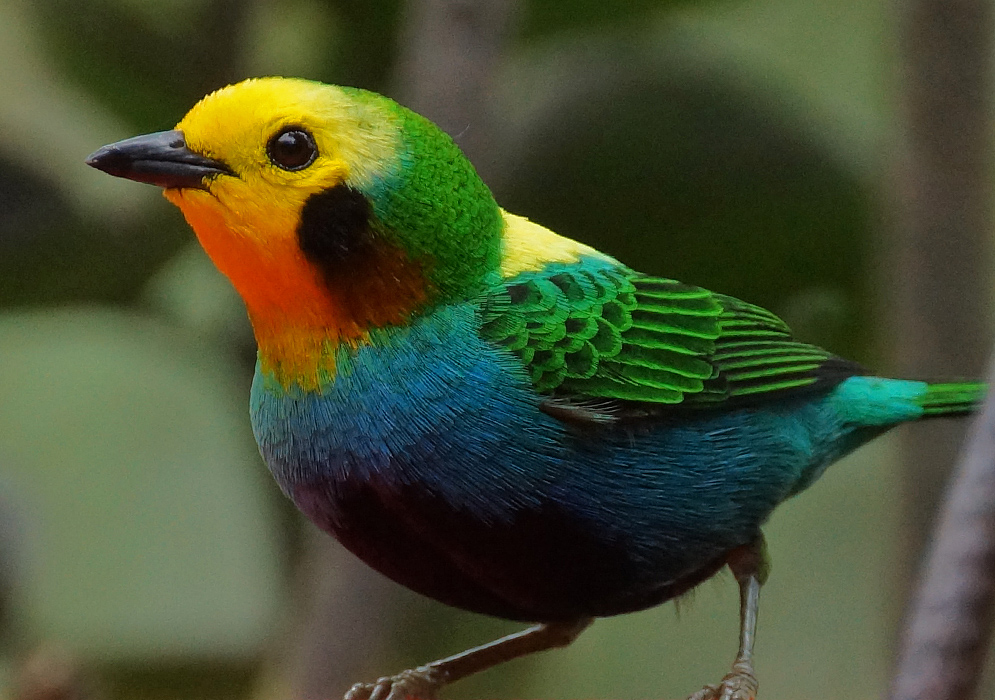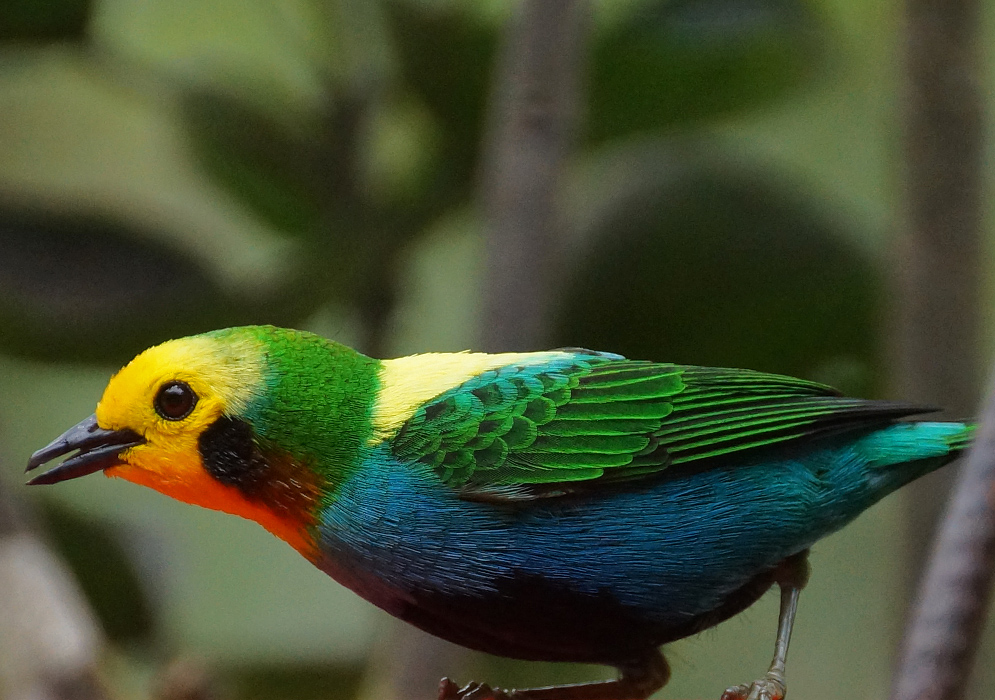This post has 11 Simple Fields-fields attached. Show fields.

The Multicolored Tanager, a small passerine bird measuring about 5 inches in length, is distinguished by its vivid and diverse coloration. Males display a striking combination of a yellow crown, face, mantle, and throat, with chestnut and black ear coverts, a bright green nape and wings, a blue rump, breast, and belly, and a distinctive black patch on the underparts. In contrast, females are less colorful, lacking the yellow mantle and black patch found in males. Juvenile birds resemble females but are generally duller. Endemic to Colombia, the Multicolored Tanager predominantly inhabits the wet montane forests of the Occidental and Central Cordillera. Colombia leads the world in the number of bird species with over 1,840, eighty which are endemic only to Colombia. Its typical elevation range is between 4,265 and 7,218 feet, although it has been recorded as low as 2,953 feet. This species is commonly found in departments like Cauca, Valle del Cauca, Choco, Quindío, Risaralda, Caldas, and Antioquia, showing a preference for mature forests. However, it is also known to occupy mature secondary forests and forest edges. The Multicolored Tanager is typically found as part of mixed-species flocks in the upper canopy of forests, where it forages for insects on the undersides of leaves and also consumes ripe fruits from a variety of plant genera such as Cordia, Miconia, Palicourea, and Ficus. The Multicolored Tanager is now experiencing population declines across its range due to habitat destruction. Currently, the IUCN lists this species as vulnerable, primarily due to its small range and limited number of locations. The species' population is suspected to be between 13,000 and 35,000 individuals, with a decreasing trend. Conservation efforts proposed include expanding protected areas within its range, enforcing conservation measures in existing protected areas, and conducting scientific research to better understand its ecological needs and accurately estimate subpopulation sizes. Photographed in the western Andes mountain range of Colombia (Cordillera Occidental).



